Brushing and Flossing
Preventive dental care is important throughout your life, no matter your age. By practicing good oral hygiene at home and scheduling regular checkups with your dentist, you can help keep your smile bright and healthy for many years to come. Here are a few simple ways that you can prevent the build-up of plaque and development of cavities:
- Brushing your teeth at four times a day is ideal, due to Biofilm repopulating every six hours. Make sure you brush with a soft-bristled toothbrush in a circular motion, no scrubbing. Use toothpaste that contains Xylitol to remove food particles and plaque from the tooth surfaces. This will help prevent cavities!. Also be sure to brush the top surface of your tongue; this will remove any extra plaque-causing food particles, and help keep your breath fresh!
- Clean between your teeth by water-picking at least once a day. The highest quality water-pick is hydrofloss. Additionally, Waterpik is another alternative.
- You should be using a mouthwash of essential oils to help kill bacteria and freshen your breath. Decay-causing bacteria can linger between teeth where toothbrush bristles can't reach. Floss and mouthwash will help remove plaque and food particles from between the teeth and under the gum line.
- Oil Pulling can be used as an alternative as well:
Use coconut oil. While you can get the same bacteria-fighting benefits with sesame or sunflower oil, coconut oil has the added benefit of lauric acid, which is well-known for its anti-microbial agents, making it more effective. Also, a recent study found that coconut oil may help prevent tooth decay. Five easy steps :
1. Make sure to oil pull first thing when waking, before eating or drinking anything.
2. Swish about 1-2 Tbl of Coconut Oil for about 10-20 minutes
3. Spit out oil and rinse. For an extra clean mouth, try rinsing with salt water.
4. Brush your teeth as normal
5. Repeat 3-4 times per week for best results - Eat a balanced diet, and try to avoid extra-sugary treats. Nutritious foods such as raw vegetables, plain yogurt, cheese, or fruit can help keep your smile healthy.
- Remember to schedule regular checkups with your dentist every six months for a professional teeth cleaning.
- Ask your dentist about dental sealants, protective plastic coatings that can be applied to the chewing surfaces of the back teeth where decay often starts.
- If you play sports, be sure to ask your dentist about special mouthguards designed to protect your smile.
If it's been six months since your last dental checkup, then it's time to contact our practice and schedule your next appointment!
- Brushing Instructions
-
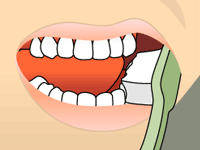
Brushing: Step 1
Place your toothbrush at a 45-degree angle to your gum.
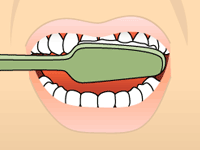
Brushing: Step 2
Brush gently in a circular motion.
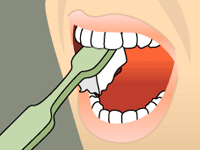
Brushing: Step 3
Brush the outer, inner, and chewing surfaces of each tooth.
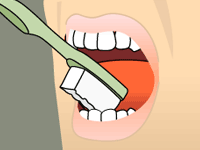
Brushing: Step 4
Use the tip of your brush for the inner surface of your front teeth.
- Flossing Instructions
-
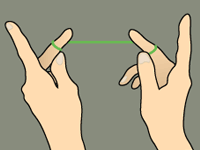
Flossing: Step 1
Wind about 18 inches of floss around your fingers as shown. Most of it should be wrapped around one finger, and the other finger takes it up as the floss is used.
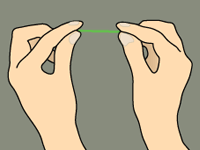
Flossing: Step 2
Use your thumbs and forefingers to guide about one inch of floss between your teeth.
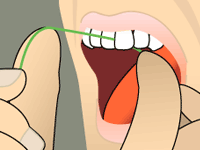
Flossing: Step 3
Holding the floss tightly, gently saw it between your teeth. Then curve the floss into a C-shape against one tooth and gently slide it beneath your gums.
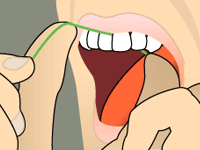
Flossing: Step 4
Slide the floss up and down, repeating for each tooth.
-
- To learn more about Water-picking, click here:
- Hydrofloss
Waterpik














 Website Powered by Sesame 24-7™
Website Powered by Sesame 24-7™